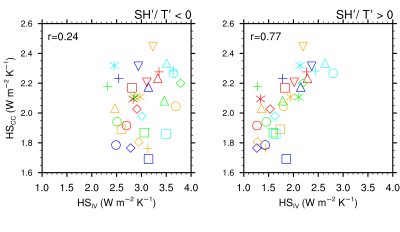Predicting the Intensification of Global Precipitation Under Climate Change
Global precipitation is expected to intensify under climate change, but the amount of intensification per degree of warming remains highly uncertain across climate models. Here, we evaluate this so-called hydrologic sensitivity in climate models by decomposing the global energy budget.
This research suggests that global climate models are almost all underestimating the rate at which global precipitation will intensify under climate change. This means that wet regions will likely become even wetter than previously expected, and dry regions will become even drier.
Under anthropogenic climate change (CC), the global hydrological cycle intensifies at a rate known as hydrologic sensitivity (HS). Global climate models (GCMs) exhibit substantial uncertainty in HS. Past work suggests that another form of HS, derived from internal climate variability (IV), is useful for constraining this uncertainty. However, these two forms of HS are weakly related. Here we show that decomposing HS under both CC and IV, based on the global energy budget, provides insight into the
likely range of future HS. We find that sensible heat exchange between the atmosphere and ocean is not accounted for in the atmospheric energy budget under IV, masking the connection between HS under IV and CC. Removing this term, a closer relationship emerges. We use observations in conjunction with this relationship to suggest an upward shift in the likely range of future HS.

